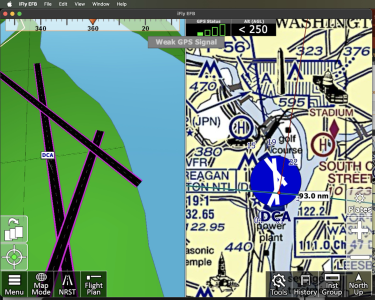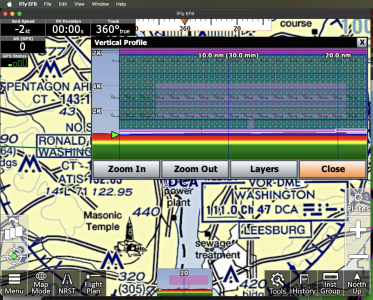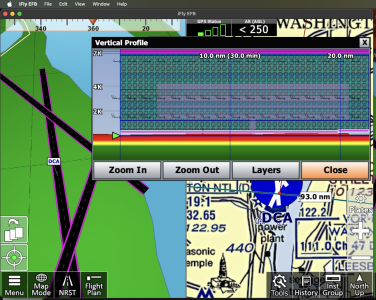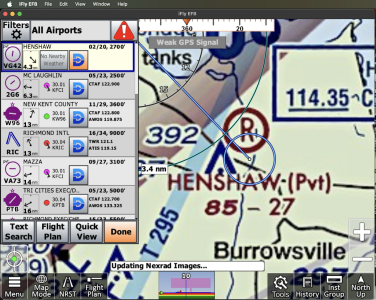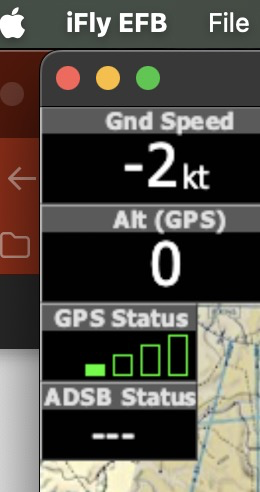- Joined
- Apr 13, 2023
- Messages
- 509
- Reaction score
- 90
I finally got around to trying iPad and iPhone apps on the Mac Studio desktop computer with an Apple Silicon M2 Max chip that I bought last summer.
I ran several successfully before summoning the courage to try iFly EFB. There was a brief learning period while I had to read some help to find out how to use the keyboard for the various iPad gestures, but once past that--and iFly booted up in its own window and commenced loading charts. Then--ta-DAAAAA!!!--it started working absolutely perfectly normally on the Mac.
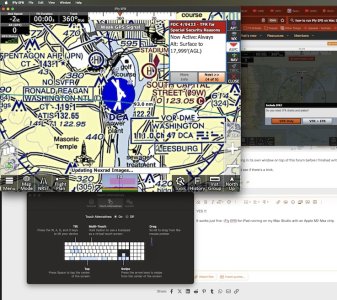
The keyboard help is in the black window just below iFly.
This is the DC helo chart showing KDCA, Washington National Airport, and the river into which that regional jet and the Blackhawk crashed a couple of weeks ago.
I ran several successfully before summoning the courage to try iFly EFB. There was a brief learning period while I had to read some help to find out how to use the keyboard for the various iPad gestures, but once past that--and iFly booted up in its own window and commenced loading charts. Then--ta-DAAAAA!!!--it started working absolutely perfectly normally on the Mac.

The keyboard help is in the black window just below iFly.
This is the DC helo chart showing KDCA, Washington National Airport, and the river into which that regional jet and the Blackhawk crashed a couple of weeks ago.

